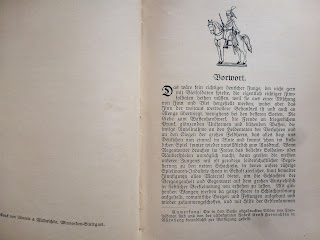Volume 14 of Die Zinnlaube arrived recently, now only published once a year, this is the 2024/25 issue, 112 pages (including the cover) printed in full colour throughout with text in German and English.
When I have a little money, I buy Toy Soldiers; and if I have any left, I buy food and clothes. (with apologies to:) ERASMUS
Sunday, 1 September 2024
Die Zinnlaube vol. 14
Tuesday, 30 July 2024
John Ruddle's Battleship
On 6th December last year the Toy Solder Collection of the late John Ruddle was sold by C&T Auctions and I am told that the sale raised £100,000. Here is a link to the online catalogue, compiled by James Opie, which in itself is a valuable resource for collectors of old toy soldiers: The Toy Soldier Collection of the Late John Ruddle Auction (candtauctions.co.uk)
But not everything went to auction; the wargame buildings, accessories, homecast figures and ships from his garden were considered unsuitable for inclusion in the sale, largely due to their condition, and were sold privately as a job lot. After cleaning up and some repair most of the ships were sold through a collectors shop in Gosport, a Naval town just outside Portsmouth, where they were mostly snapped up by retired Naval officers as garden ornaments.
John had told me, some years previously, that he'd sold all of his model ships to a collector in Germany and I assumed he meant his garden battleships, naturally I was disappointed that I'd never see them again. I realise now that he meant his collection of 1:1200 scale waterline ships, for which there is a much larger following in Germany, that made a lot more sense to me. The last two garden battleships found their way to the London Toy Soldier Show last year so I couldn't pass up the opportunity to acquire one as a piece of iconic wargaming history.
Monday, 1 April 2024
Battle Ravens - Dan Mersey
It's been a while since we last had a game but this weekend I finally managed to clear enough space for one. Battle Ravens is a board game designed by Dan Mersey with graphics provided by Peter Dennis, both well known names in the gaming world, the former for rules systems and the latter for his excellent ranges of paper soldiers. The game is about combat in a Viking/Saxon shieldwall and comes with opposing 35mm armies of Peter's card mounted paper soldiers. Anthony thought it would be good to play using 54mm toy soldiers so I dusted off the Dark Ages collection and this is how it went:
The two armies square up to form shieldwalls, each has armoured Hirdmen (Hearthguards) in the front line, unarmoured Bondi in the second line and a group of Thrals (skirmishers) behind them. The command units overseeing each shieldwall have no role in the game but I included them to represent the players, and because they look good.
Friday, 13 October 2023
German Wargame Rules from 1917
Strategie und Taktik des Spiels mit Bleisoldaten (Strategy and Tactics for games with lead soldiers)
Pentagon Publishing, Stuttgart, 1917 78 pages monochrome.
I had been hunting this little tome for many years but it constantly evaded me until last year when I bit the bullet and treated myself for my birthday!
Saturday, 7 October 2023
More on John Ruddle
Further to my last post, many thanks to Brad DeSantis for directing me to the excellent articles about John Ruddle's garden by Bob Cordery on his Wargaming Miscellany blog. Bob has captured every photograph of John's garden that I think I've ever seen published and will give you a good flavour of what it was like:
http://wargamingmiscellany.blogspot.com/search/label/John%20Ruddle
And here is a link to the short film report for the Nationwide TV programme in 1978 discovered by Brian Cameron and mentioned in Bob's post of 23rd may 2023.
They're both well worth a look.






















